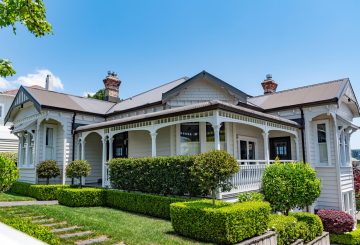新西兰瓦卡塔内的一所学校正在庆祝其最大的土著博士毕业生群体。当学生们穿着毕业服装在城里漫步时,街道上到处都是传统的歌舞表演。这所名为Te Whare Wánanga o Awanuiárangi的学校于5月10日举行了仪式,以表彰学生的辛勤工作,并庆祝土著博士毕业生人数创纪录的一年。
该校首席执行官维雷穆·多尔蒂教授表示,授予近2,500份资格证书真是太了不起了,其中14份是博士学位。他说,毕业是庆祝学生的旅程和他们对教育的承诺的时候。
这一天首先在 Te Mánuka Tütahi marae 举行传统的毛利人欢迎仪式,随后在城里散步,然后返回马拉埃参加仪式。授予的资格包括向艾德丽安·冯·通泽尔曼颁发的杰出教育奖学金,以表彰她对社区发展、治理和教育的贡献。
Te Whare Wánanga o Awanuiárangi 是一家高等教育提供商,提供从入门级课程到博士研究的课程。它是新西兰唯一一所提供博士学位课程的学校,重点是土著学习方法和课程。
多尔蒂教授说,他们很自豪能够站在土著研究的最前沿,不仅在新西兰,在国际上也是如此。毕业典礼上的嘉宾中有来自澳大利亚维多利亚州穆纳拉区域卓越中心的一群人,他们来进一步了解学校使用的本土学习模式。
除毕业典礼外,学校还为博士毕业生举办了研讨会,向社区介绍他们的研究。研究课题包括让儿童脱离家庭的影响、河流保护和身份政治。
该学校成立于1992年,是新西兰唯一一所提供从基础研究到哲学博士学位课程的学校。它在华卡塔内、奥克兰和旺加雷设有校区,拥有5,900多名学生,其中包括来自华盛顿州和夏威夷的土著博士生。

















































-660x440.jpg)












